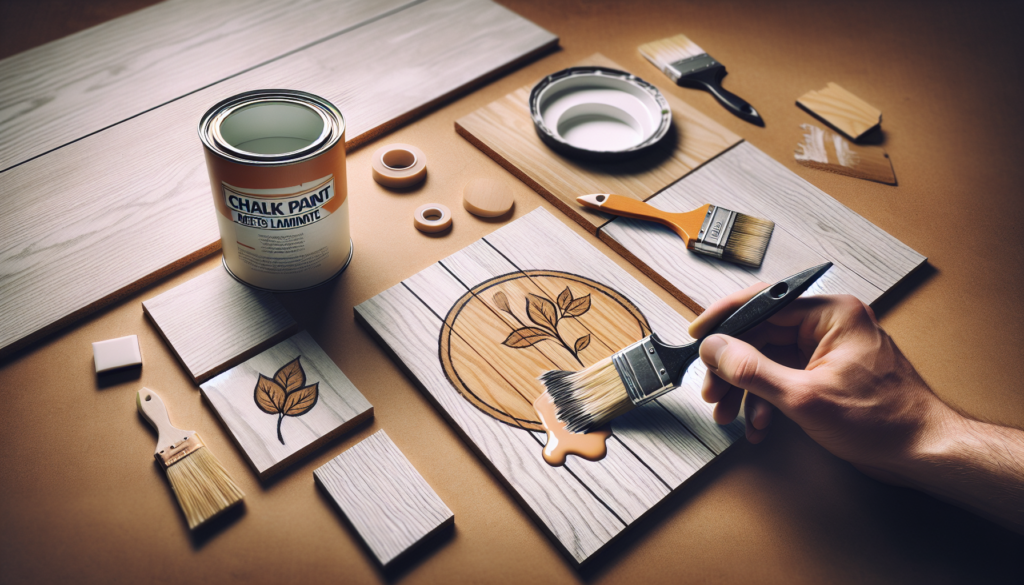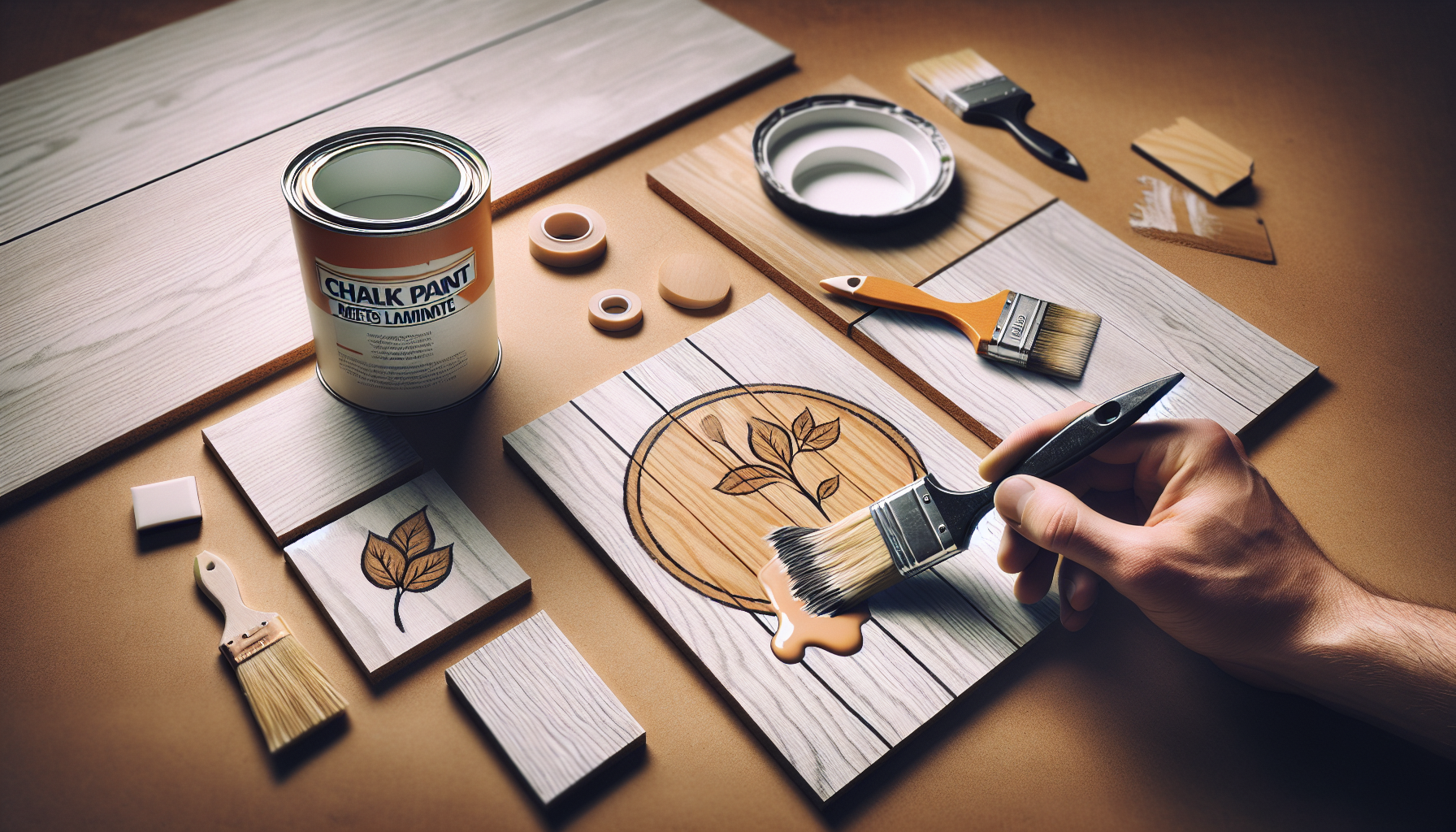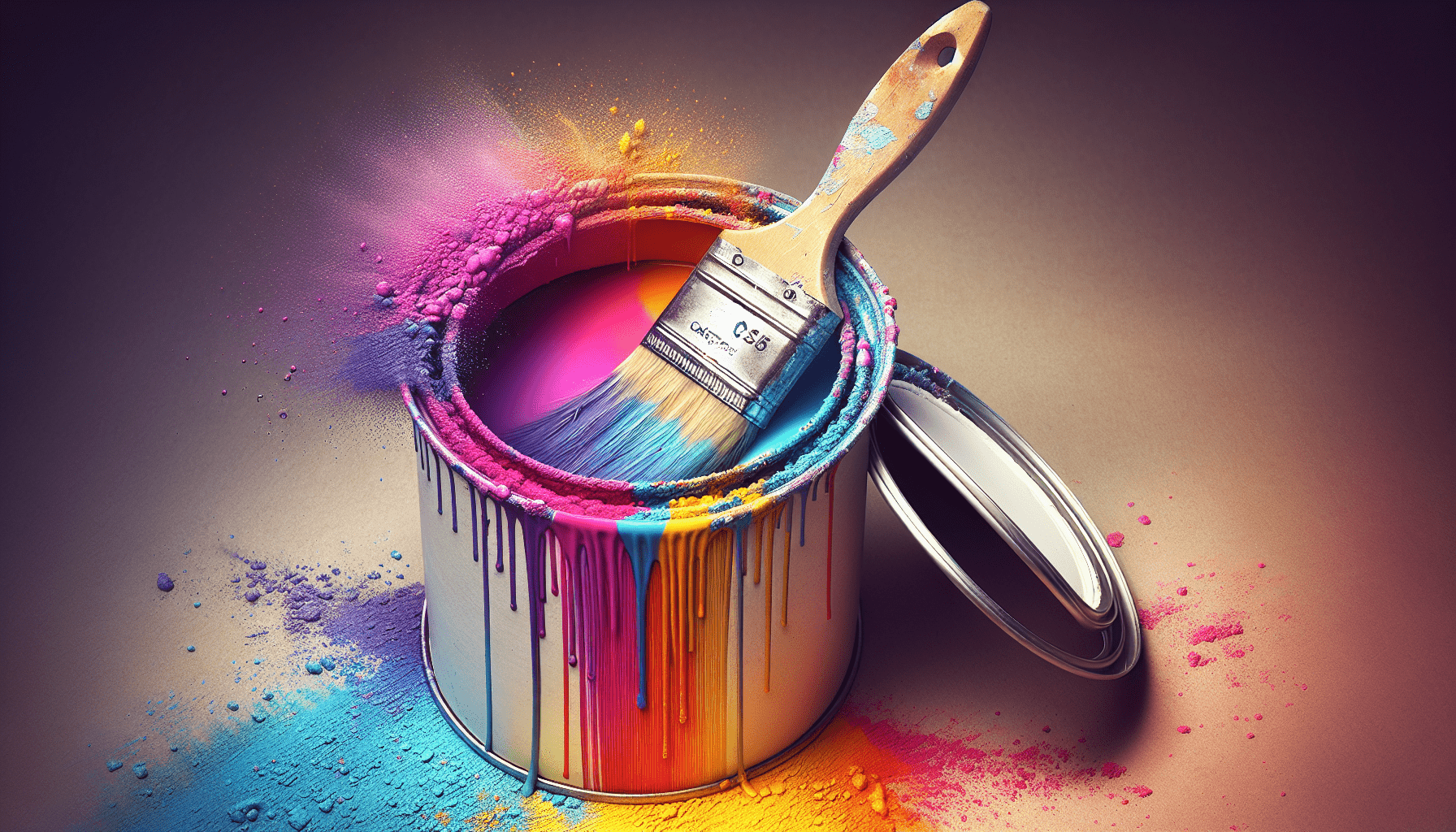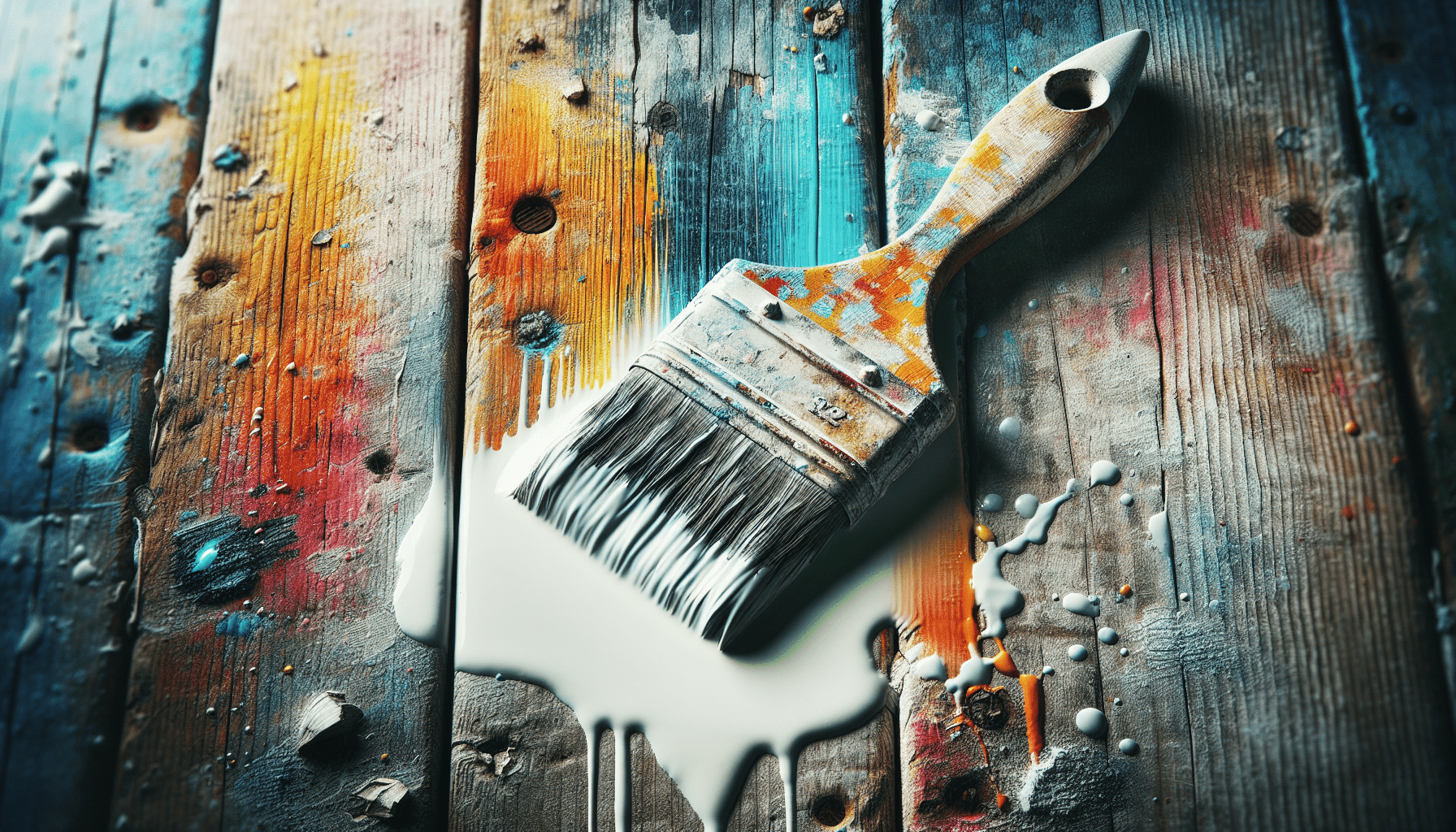Chalk paint has become increasingly popular in the world of home decor, thanks to its versatile and effortless application. But one question that often arises is whether it can be used on laminate surfaces. The answer to this query lies in understanding the properties of both chalk paint and laminate. In this article, we will explore whether using chalk paint on laminate is a viable option, considering the durability and adhesion factors, as well as alternative solutions for transforming your laminate furniture or surfaces. Discover the key considerations and possibilities for revamping your laminate pieces with chalk paint.
What is Chalk Paint?
Chalk paint is a type of paint that has gained popularity in recent years due to its unique characteristics and versatility. Unlike traditional paint, chalk paint has a matte, chalky finish that gives furniture and other surfaces a vintage, shabby-chic look. It is known for its ease of use, as it requires little to no surface preparation or priming before application. Chalk paint is also known for its ability to adhere to a variety of surfaces, including wood, metal, and even glass.
Composition of Chalk Paint
Chalk paint is made up of a few key ingredients that give it its distinct properties. The main components of chalk paint are pigments, calcium carbonate, water, and a binder. The pigments provide the color, while the calcium carbonate gives the paint its characteristic chalky texture. The binder helps the paint adhere to surfaces and provides durability. Some brands of chalk paint may also contain additives such as acrylic resins or additives to enhance performance.
Characteristics of Chalk Paint
Chalk paint has several notable characteristics that set it apart from other types of paint. First and foremost, it has a matte finish that creates a soft, velvety appearance. This finish is often described as “chalky” or “powdery,” which adds to the vintage aesthetic that chalk paint is known for. Another characteristic of chalk paint is its ability to create texture and depth, as it can be easily distressed or sanded to reveal underlying layers of paint or wood. Additionally, chalk paint is known for its excellent coverage, requiring fewer coats compared to traditional paint.
Benefits of Using Chalk Paint
Using chalk paint on furniture, particularly on laminate surfaces, offers several benefits. Firstly, it allows for easy and quick transformation of outdated, worn-out furniture into stylish and on-trend pieces. Chalk paint can help achieve a distressed, rustic, or farmhouse style that is currently in high demand. Furthermore, chalk paint’s adhesive properties make it suitable for application on various surfaces, including laminate, without the need for extensive preparation. This saves time and effort, as there is no need for sanding or priming the surface beforehand. Chalk paint is also environmentally friendly, as it is typically water-based and has low VOC (volatile organic compound) content, making it a healthier choice for both the user and the environment.
Understanding Laminate
What is Laminate?
Laminate is a synthetic material commonly used in furniture and flooring. It consists of several layers of composite materials that are fused together using heat and pressure. The top layer of laminate is a printed decorative paper that mimics the appearance of real wood, stone, or other materials. This layer is protected by a clear, durable wear layer that provides resistance to scratches, stains, and fading. Underneath the decorative layer, there are layers of high-density fiberboard (HDF) or particleboard that give laminate its structure and stability.
Characteristics of Laminate
Laminate has several characteristics that make it a popular choice for furniture and flooring. One of its main advantages is its affordability compared to natural materials like hardwood or stone. Laminate is also highly durable and resistant to scratches, stains, and fading, making it suitable for high-traffic areas. It is easy to clean and maintain, requiring only regular sweeping or vacuuming and occasional damp mopping. Additionally, laminate is available in a wide range of colors and designs, allowing for versatile and customizable options for different design styles.
Common Uses of Laminate
Laminate is commonly used in residential and commercial settings for various applications. In the furniture industry, laminate is often used for tabletops, cabinet doors, and shelving due to its durability and affordability. It is also a popular choice for kitchen and bathroom countertops due to its resistance to moisture and stains. In the flooring industry, laminate flooring is widely used as an alternative to hardwood or tile flooring. Its easy installation, durability, and cost-effectiveness make it a practical choice for many homeowners and businesses.

Applying Chalk Paint on Laminate
Preparation
Before applying chalk paint to a laminate surface, it is important to properly prepare the area to ensure optimal adhesion and a long-lasting finish. Start by cleaning the laminate surface thoroughly to remove any dirt, grease, or other residues. A mild detergent or cleaner can be used for this purpose, followed by rinsing and drying the surface completely. It is also recommended to lightly sand the laminate surface to create a rougher texture, which will help the paint adhere better. Use a fine-grit sandpaper or sanding block and gently go over the entire surface, being careful not to sand too aggressively and damage the laminate.
Priming Laminate
While chalk paint is known for its ability to adhere to various surfaces without priming, applying a primer on laminate can help improve adhesion and provide a smoother finish. Look for a primer specifically designed for laminate surfaces, as it will have better adhesion properties and ensure compatibility with the chalk paint. Apply the primer evenly using a brush or roller, following the manufacturer’s instructions regarding drying times and recoat intervals. Allow the primer to dry completely before proceeding with the painting process.
Painting the Laminate
Once the surface has been properly prepared and primed, it is time to apply the chalk paint. Stir the paint well to ensure that the pigments are evenly distributed throughout. Using a high-quality brush or foam roller, apply the chalk paint in thin, even coats, working in the direction of the grain or pattern of the laminate. Avoid applying too much paint at once, as this can lead to drips or uneven coverage. Allow each coat to dry completely before applying additional coats, following the manufacturer’s recommended drying times. Depending on the desired color intensity and coverage, multiple coats may be necessary to achieve the desired result. Finally, let the paint cure for at least 24 hours before using the painted laminate surface.
Potential Issues and Solutions
Adhesion Problems
In some cases, adhesion problems may occur when applying chalk paint to laminate surfaces. These issues can manifest as peeling, chipping, or flaking of the paint. To minimize the risk of adhesion problems, ensure that the laminate surface is properly cleaned and sanded before painting. Applying a primer designed for laminate surfaces can also improve adhesion. Furthermore, following the manufacturer’s instructions regarding drying times and cure times is essential to allow the paint to adhere properly. If adhesion issues persist, lightly sand the affected areas and apply an additional coat of chalk paint, making sure to feather the edges to blend with the surrounding painted surface.
Durability and Scratching
While chalk paint can provide a beautiful finish on laminate, it may not be as durable as other types of paints or finishes. Laminate surfaces, especially in high-traffic areas, are prone to scratching and wear over time. To help protect the painted laminate surface, consider applying a clear topcoat or sealant specifically designed for chalk paint. This will help provide an extra layer of protection against scratches, stains, and general wear and tear. Be sure to choose a topcoat that is compatible with chalk paint and follow the manufacturer’s instructions for application and drying times.
Sealing Chalk Paint on Laminate
Sealing chalk paint on laminate can help enhance its durability and longevity. There are several options for sealing chalk paint, including wax, polyurethane, and varnish. Wax is a popular choice for sealing chalk paint, as it provides a soft sheen and enhances the vintage look. It can be applied using a clean cloth or brush and buffed to a desired shine. Polyurethane and varnish offer a more durable finish and are better suited for high-traffic areas. They can be applied with a brush or roller and require multiple coats for optimal protection. Ensure that the chosen sealer is compatible with chalk paint and follow the manufacturer’s instructions for application and curing times.

Alternatives to Chalk Paint
Acrylic Paint
Acrylic paint is a versatile and widely available paint option that can be used on laminate surfaces. It offers a wide range of colors and finishes, including matte or satin finishes that can resemble the chalky appearance of chalk paint. Acrylic paint provides good adhesion and durability, especially when paired with a suitable primer and sealer. It can be applied using a brush, roller, or even sprayed for larger surfaces. Like chalk paint, acrylic paint requires little to no surface preparation, making it a convenient option for painting laminate furniture or surfaces.
Oil-based Paint
Oil-based paint is another alternative to chalk paint that can be used on laminate surfaces. It offers excellent adhesion and durability, making it a suitable choice for high-traffic areas or surfaces that require additional protection. Oil-based paint provides a smooth, glossy finish that can be achieved in different sheens, including satin or high gloss. When using oil-based paint, proper surface preparation is crucial, as it requires sanding and priming before application. It also has a longer drying time compared to chalk paint or acrylic paint and may emit stronger fumes, so adequate ventilation is necessary during the painting process.
Laminate-Specific Paints
Some paint manufacturers offer paints specifically formulated for laminate surfaces. These paints are designed to provide optimal adhesion and durability on laminate and other smooth surfaces. Laminate-specific paints often come in a range of colors and finishes, allowing for customization and versatility. They may also contain additives or features that enhance resistance to scratching, stains, or moisture. When using laminate-specific paints, it is important to follow the manufacturer’s instructions for surface preparation, application techniques, and drying times to ensure a successful and long-lasting finish.
Tips and Tricks for Chalk Painting Laminate
Cleaning and Sanding Laminate Surface
Before applying chalk paint to laminate, ensure that the surface is clean and free of any dirt or residue. Use a mild detergent or cleaner and a soft cloth to wipe down the surface, followed by rinsing and drying it thoroughly. Additionally, lightly sanding the laminate surface with a fine-grit sandpaper or sanding block will help create a rougher texture for better paint adhesion. Be gentle during sanding to avoid damaging the laminate.
Choosing the Right Chalk Paint and Tools
When selecting chalk paint for painting laminate, consider factors such as color selection, coverage, and brand reputation. Opt for a high-quality chalk paint that is known for good adhesion and durability. Look for paints that are specifically labeled as suitable for use on laminate surfaces or that have positive reviews from users who have successfully painted laminate. Additionally, invest in good-quality brushes or foam rollers that are suitable for chalk paint application, as these tools will ensure an even and smooth finish.
Application Techniques for Best Results
To achieve the best results when applying chalk paint to laminate, consider the following techniques. Apply the paint in thin, even coats rather than thick layers to prevent drips or uneven coverage. Work in sections or small areas at a time to maintain control over the paint application. When painting larger surfaces, such as tabletops or cabinet doors, paint in the direction of the grain or pattern of the laminate to create a uniform look. For a distressed or aged effect, consider lightly sanding or distressing the painted surface after it has fully dried.
Before and After: Chalk Painted Laminate Furniture
Inspiring Examples
Chalk paint can work wonders in transforming laminate furniture into stylish and personalized pieces. From outdated and worn-out surfaces to revamped and on-trend furniture, the possibilities are endless. By browsing through inspiring examples available online or in various home decor magazines, you can gather ideas and inspiration for your own chalk paint projects. These examples showcase the versatility of chalk paint, allowing you to see how different colors and application techniques can completely transform the look and feel of laminate furniture.
Customer Experiences
Many individuals have successfully used chalk paint on laminate furniture and surfaces, sharing their positive experiences and outcomes. Reading about these customer experiences can provide valuable insights and tips for your own painting projects. Customer reviews and testimonials can help you learn about specific brands or techniques that have worked well for others. They may also highlight any potential challenges or issues to be aware of, allowing you to make informed decisions and set realistic expectations for your own chalk painting endeavors.
Longevity of Chalk Paint on Laminate
One common concern when using chalk paint on laminate is the durability and longevity of the finish. While chalk paint can adhere well to laminate and create a beautiful finish, it may not be as long-lasting as other types of paints or finishes. Factors such as the amount of use, type of sealer applied, and proper maintenance can affect the lifespan of the painted laminate surface. Applying a protective topcoat or sealant, avoiding excessive moisture or abrasion, and taking proper care of the painted surface can help prolong the life and appearance of the chalk paint on laminate.
Conclusion
Chalk paint offers a unique and versatile option for transforming laminate furniture and surfaces. Its matte, chalky finish and vintage charm appeal to many individuals looking to update their home decor. While chalk paint can adhere well to laminate and create a beautiful finish, it is important to consider factors such as surface preparation, priming, and proper sealing to ensure optimal adhesion and durability. Alternatives to chalk paint, such as acrylic paint or oil-based paint, can also be considered based on personal preferences and project requirements. By following the tips and techniques outlined in this article, you can achieve successful results when chalk painting laminate and tap into your creativity to personalize your furniture and express your personal style.



